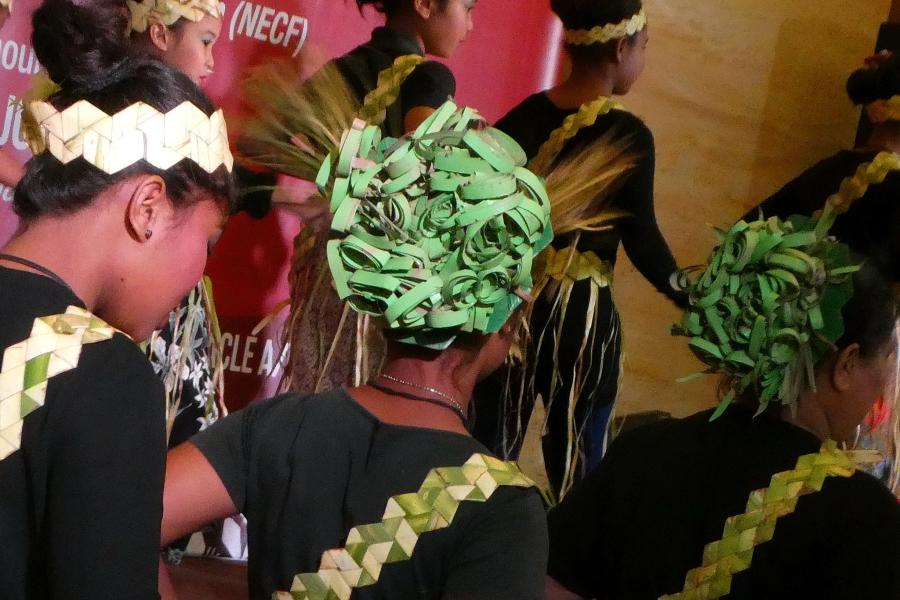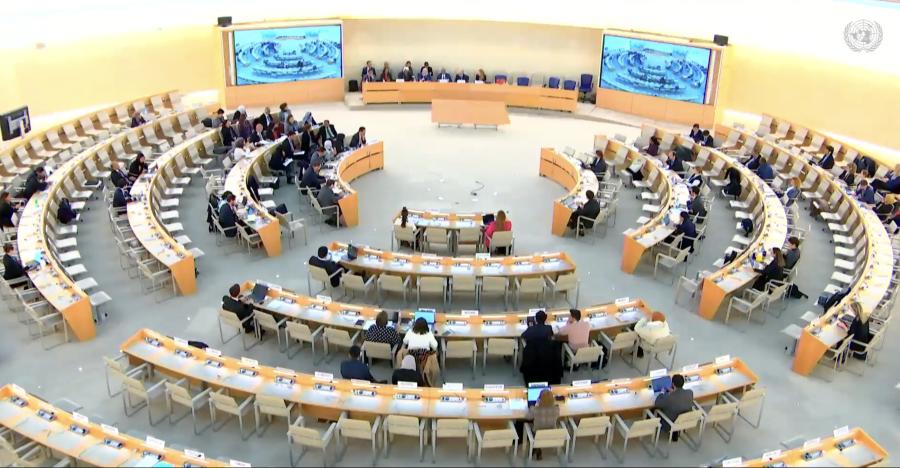Orang Asli are the original people of West Malaysia. Under federal law, they have no ownership rights to their traditional lands, despite having lived in Malaysia centuries longer than other groups. When Malaysian officials or businessmen want Orang Asli land, they may bring in a bulldozer and flatten houses and gardens. Orang Asli, however, are most often dispossessed by legal maneuvers.
Sagong Tasi is an old man in ill health. He lives in Bukit Tampoi, a village of the Temuan sub-group of Orang Asli. He and others in his village have difficulty understanding the Legal Aid lawyers from the Malaysian Bar Council who are working to establish their land rights. Besides language differences, Sagong is unfamiliar with the court system. Sagong and other villagers have gone to court because the government expelled them in 1996 to make way for a highway to the international airport nearby. The Temuan were paid some small compensation for their fruit trees and houses, but no compensation for the 38 acres they lost. The government said they did not own any land, despite the fact that the land had been their home for generations and contains their farm plots, orchards, and ancestral graveyards.
Five years have passed since the Bukit Tampoi Temuan were expelled. Their attempt at a redress of grievance has now been heard in court by a judge. Their opponents in court -- mainly lawyers for the government -- have argued that Temuan are no longer Orang Asli because they do not practice their former culture; as ordinary citizens, customary laws (adat) and customary land cannot be a part of a legal case. The lead lawyer for the Orang Asli responded that the Temuan are not trespassers; those who dispossessed them are the trespassers. Despite deficiencies in federal law, the national constitution does enshrine Temuan ownership rights.
The day the case began and every day thereafter, Sagong and his co-plaintiffs came into court wearing traditional plaited headgear and body sashes. When it was Sagong's turn on the witness stand, it was hard for him to endure the loud-voiced cross-examination by robed strangers who hold different values and represent powerful outsiders. He was chilled to the bone in the cold-conditioned court room and his heartbeat was erratic. Yet he persevered in telling the court about old grave sites and about the genealogy of Temuan leaders. Dabak Chabak, another elder, who is the Penghulu Balai (customary law keeper) at Bukit Tampoi, felt such a strain from being questioned in court for just one day that he became sick and had difficulty walking for days afterward.
In early January, 2001, the judge in the Bukit Tampoi case ruled on a vital point in favor of the Temuan. He decided that oral history could be used as evidence to support their case for rights to traditional lands. He also noted that Malaysian law does make special provision for coping with the difficulties inherent in deciding aboriginal claims, although this provision is not widely used.
About two weeks later, Dabak, the customary law keeper, returned to court to show how customary rules persist at Bukit Tampoi, especially in determining death and burial rituals. Fortunately, photographs were available of a recent burial in the village. Their exhibition in court helped Dabak explain the rituals involved. A Malaysian archeologist's testimony favored the Temuan claim to be long-time local residents. She testified that an iron spear-head some Temuan had accidentally unearthed at Bukit Tampoi was likely over a hundred years old. While this did not prove Bukit Tampoi itself had been settled at that time, she said that her work and that of others clearly shows that people have lived in the vicinity for centuries, even over thousands of years. Based on artifacts found through excavations, the "long-ago people" paddled boats on the river, mined for tin (abundant near the surface in the area), and engaged in trade of tin and forest products.
The final witness for the Temuans was Dr. Colin Nicholas, Coordinator of the non-governmental Center for Orang Asli Concerns (COAC) in Malaysia. Based on his research and that of others, he testified that Orang Asli had been in Malaysia for millenia. For the Bukit Tampoi area in the Langat Valley in particular, material in the national archives showed that Orang Asli lived there at least in the 19(th) century. He was able to trace Temuan residents of Bukit Tampoi back seven generations, aided by early photographs and information provided by Sagong Tasi. Recent research by others has documented Bukit Tampoi as a settled, organized Temuan community with its own culture. As the Temuan language has no written script, Temuan rely on an oral tradition to maintain their customs, rituals, and belief systems. All this constitutes oral history, which provides basic evidence for their land claims and distinct culture.
Dr. Nicholas also told the court about the history of legislation on Orang Asli. Legislation was enacted in the 1950s to provide protection to them (from "unscrupulous exploitation," and "to safeguard their tribal organization and way of life..."). The government's intent later changed to a policy of integration and assimilation. By the 1990s, the government's policy statement on Orang Asli had dropped any mention of their land rights. A government official (Mohd Tap bin Salleh) with jurisdiction over Orang Asli wrote in 1990, "[up to 70 percent of] Orang Asli communities [have] no legal rights or protection over the land they have traditionally occupied. The majority of these communities have become vicyims of newly created laws and regulations. They have suddenly found themselves to be illegal occupants of newly designated forest reserves, nature reserves, catchment areas and areas earmarked by the government for special development. As a result...[they] are facing constant harassment and constant encroachment by outsiders." This quotation dovetailed with the conclusion reached by Dr. Nicholas about the Bukit Tampoi land problem: much of their traditional land has never been officially acknowledged as Temuan, due to long-standing failures by the relevant authorities.
The court hearing ended on March 29(th) and the judge's decision is expected to be given in July of this year. Until that time, supporters of the Orang Asli can only wait patiently to see if justice obtains for them.
Cultural Survival's Orang Asli Assistance Fund supports POASM, the Keene archive, and the work of COAC. The Assistance Fund welcomes contributions for Orang Asli from the friends of Cultural Survival.
Article copyright Cultural Survival, Inc.


